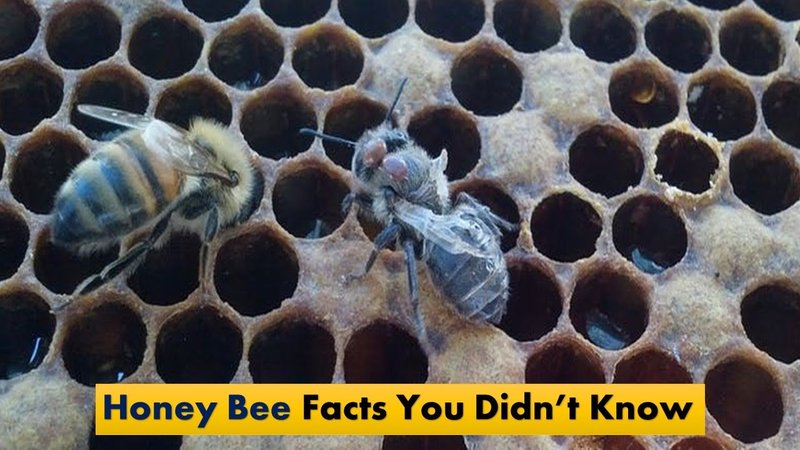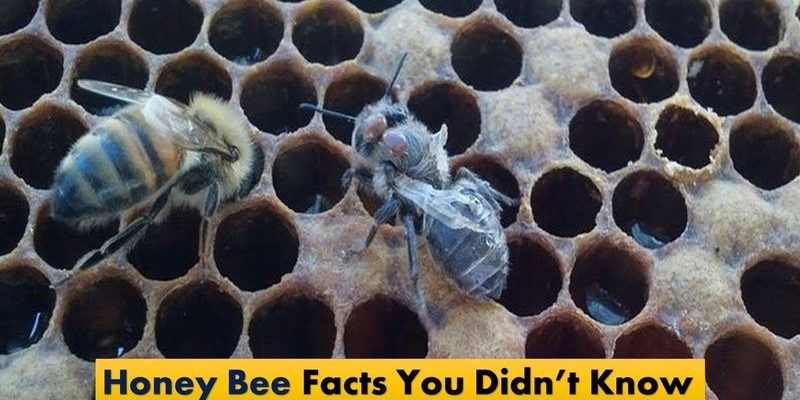
Honestly, when you think of honey bees, you might picture them floating lazily from flower to flower, gathering nectar. But there’s so much more going on beneath the surface. Let’s take a moment over coffee to explore 10 surprising facts about honey bees that might just change how you see these tiny pollinators.
1. Honey Bees Communicate Through Dance
You might think that honey bees just hum along and get to work, but they actually have a unique way of communicating with one another—through dance! When a forager bee discovers a new source of nectar, it returns to the hive and performs a series of movements known as the “waggle dance.” This dance not only tells other bees where to find the nectar but also how far away it is.
Here’s the thing: the angle and duration of the dance communicate direction and distance. If you’re ever near a hive and see a bee shaking its little body, it’s not just getting its groove on—it’s giving directions to its friends. How cool is that?
2. Each Honey Bee Has a Specific Role
In a hive, not all bees are created equal. Each honey bee has a specific role that helps the entire colony thrive. There are three main types: the queen, workers, and drones.
– The queen bee is the heart of the hive. She’s responsible for laying eggs—up to 2,000 a day during peak seasons!
– Worker bees are the busy bees of the colony. They take care of foraging for food, cleaning, and guarding the hive.
– Drones are the males, whose primary role is to mate with a queen from another hive. Once they fulfill their duty, they often don’t survive long.
So, next time you see a bee, remember it might be a highly skilled worker on a mission or the queen solely focused on continuing the hive’s lineage.
3. Honey Bees Can Recognize Human Faces
You might not think of bees as having keen eyes, but they actually can recognize human faces. Researchers have found that honey bees are capable of associating faces with certain floral patterns. Imagine they see your face while you’re tending to your garden; they can link that memory to the flowers you have planted.
This ability likely helps them identify the best foraging spots, as certain people might tend to specific flowers. It’s a unique twist that highlights the connection between humans and nature, making us wonder about just how much these insects notice!
4. Honey Bees Produce Different Types of Honey
Not all honey is created equal. The flavor and color of honey depend on the types of flowers from which the bees gather nectar. For example, honey made from clover nectar is typically light and mild, while honey from buckwheat is darker and has a stronger flavor.
Here’s a fun fact: some honey enthusiasts enjoy tasting different varietals, similar to wine tasting! So, the next time you’re at a farmer’s market, ask for a sample. You might discover a new favorite flavor.
5. Honey Bees Have Unique Lifespans
The lifespan of honey bees varies significantly depending on their role in the hive. Worker bees typically live for about six weeks during the busy summer months, while the queen can live for several years. Drones, however, have the shortest life span and die shortly after mating.
This cycle highlights how critical each bee’s role is to the hive’s survival. The short life of a worker bee is packed with intense activity—imagine living each day knowing your mission is to support your colony!
6. They Can Fly at Impressive Speeds
Believe it or not, honey bees are speedy flyers! They can reach speeds of up to 15 miles per hour. That’s faster than most people think! When you consider how tiny their wings are, it’s pretty impressive.
That speed also helps them navigate between flowers and back to the hive quickly, crucial for maintaining the colony’s food supply. So, when you see one zipping around, it’s not just being playful; it’s on a mission.
7. Honey Bees Are Vital for Agriculture
You might be surprised to learn just how critical honey bees are for agriculture. They are responsible for pollinating about one-third of the food we consume, including fruits, vegetables, and nuts. This pollination process is essential for the growth of many plants that we rely on.
Without honey bees, many of the foods we love would be in short supply. This makes them not only fascinating creatures but also key players in our food system. So, next time you enjoy an apple or a cup of almonds, remember to appreciate the bees that made it possible.
8. They Can Detect Pesticides
Honey bees are sensitive to their environment, and they can actually detect certain pesticides in flowers. This sensitivity helps them avoid harmful substances that may threaten their hive. It makes you wonder how much they really understand about their surroundings.
However, it’s worth noting that despite their ability to sense pesticides, they can still be affected. Pesticides have a significant impact on bee populations, which is why it’s essential to consider eco-friendly practices to protect these vital pollinators.
9. Honey Bees Keep Their Hives Warm
You may not realize that honey bees have their own heating and cooling system! When temperatures drop, bees cluster together in the hive to keep warm. The worker bees will vibrate their wing muscles, generating heat to maintain a cozy environment for the queen and larvae.
This fascinating behavior shows how teamwork is at the heart of the hive. Just imagine a bunch of tiny bees huddled together, working as a team to keep their home warm. It’s like a cozy family gathering, but with a purpose!
10. Honey Can Last Indefinitely
Here’s a sweet twist: honey is one of the few foods that can last indefinitely! Archaeologists have found pots of honey in ancient Egyptian tombs that are over 3,000 years old and still perfectly edible.
This incredible shelf life is due to honey’s natural composition, which includes low moisture levels and acidic pH, preventing the growth of bacteria. So go ahead and enjoy your honey—it might just last longer than some of your favorite snacks!
Closing thoughts: Honey bees are more than just cute little insects; they are incredibly complex and essential to our world. From their astonishing communication methods to their unmatched contributions to agriculture, these busy pollinators deserve our respect and protection. So, the next time you spot a honey bee, take a moment to appreciate all the hard work and wonder that goes into their buzzing lives.

